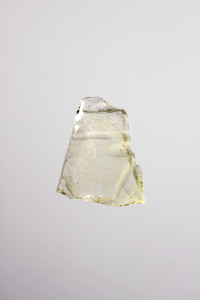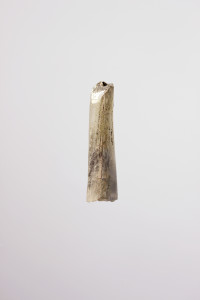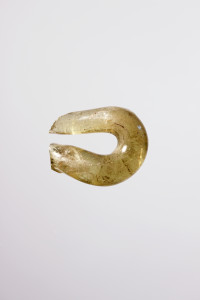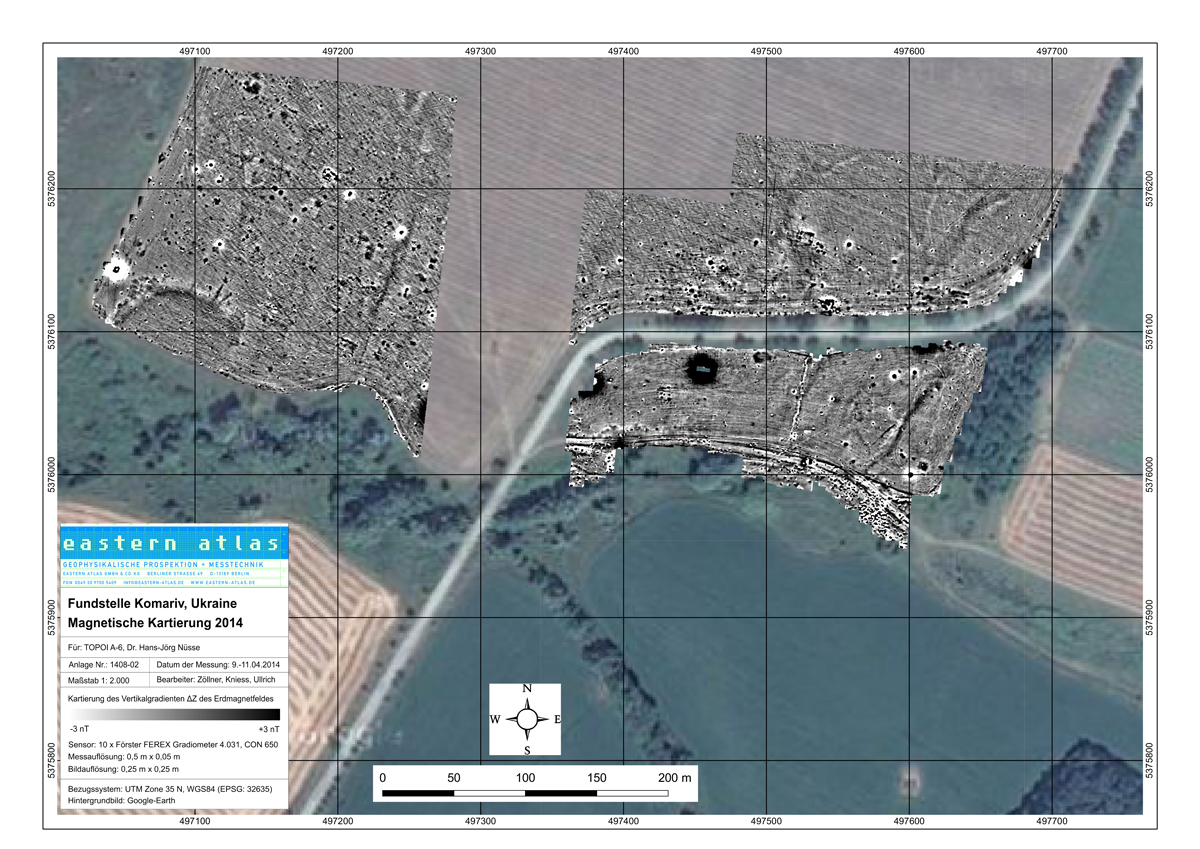The settlement of Komariv is associated with extensive production of glass vessels, which required corresponding know-how and employed Roman production methods. The initial studies in this project focued on the site itself and an analysis of the glass fragments salvaged from there.
Research
Archaeological evidence of the reprocessing of Roman glass remains an exception in wide areas of the Barbaricum. Most cases involve the production of glass beads which, from a technological perspective, can be described as simple. The settlement of Komariv, by contrast, is associated with extensive production of glass vessels, which required corresponding know-how and employed Roman production methods. The types of vessel produced are not only found in regional sites, but are also encountered, for instance, in grave finds in Scandinavia. Complex supraregional relationships appear to exist here – where Komariv was certainly one of the most important centers for production and distribution in the Barbaricum. This, however, is not the only economic area in focus. The interconnectedness with the Roman Empire must also be considered: How and by what routes were the raw materials supplied? Did specific trade relations exist for the acquisition of raw glass or recycled glass? Or was Roman waste glass in circulation in the Barbaricum?
 |
 |
 |
 |
 |
Pieces of glass from Komariv, Ukraine (Photos: J. Meyer, Institut für Prähistorische Archäologie, FU Berlin)
Results
Since 2014 Topoi has supported new investigations and excavations in Komariv initialized by Oleg Petrauskas (National Academy of Sciences of Ukraine, Kiev). Within the framework of this cooperation project two fellowships in Berlin as well as trips to Kiev and Lviv could be realized. Furthermore a visit of the archaeological excavations in Komariv took place in 2014.
The studies within this project addressed the site itself and an analysis of the glass fragments salvaged from there. By means of geomagnetic prospection carried out in 2014, the entire settlement area was delimited and a working area identified in which, among other things, glass production was located. Initial excavations in 2013, 2014 and 2015 yielded many glass finds, which are available for further analyses. A series of more than 20 samples has already been studied by WD-XRF and pXRF, where the use of Roman glass as starting material has been proven. Additionally several groups of chemical compositions are recognizable.
In a next step, the aim was to correlate the measured data with the vessel types produced in Komariv in order to filter out any specific production series. These could, in turn, be a starting point for a wide-reaching, supraregional analysis with the aim of better understanding the distribution, relationship network and social importance of these high-quality glasses.
Related Publication
Oleg Petrauskas, “Komariv – ein Werkstattzentrum barbarischen Europas aus spätrömischer Zeit (Forschungsgeschichte, einige Ergebnisse und mögliche Perspektiven)”, in: Ephemeris-Napocensis XXIV, 87–116.

